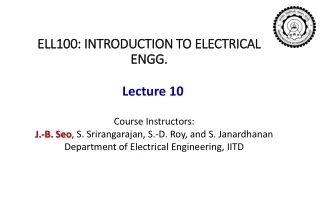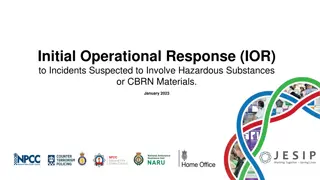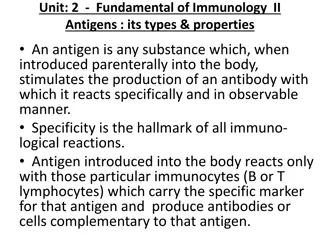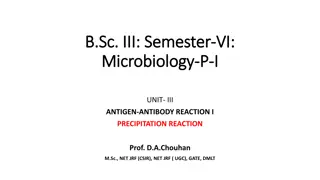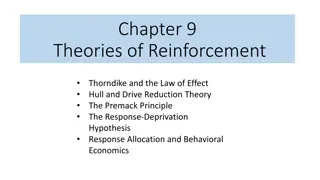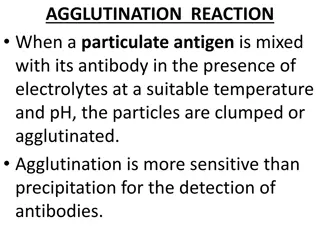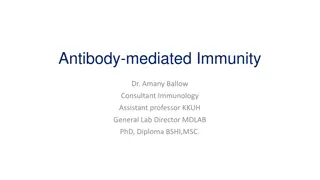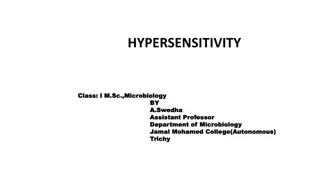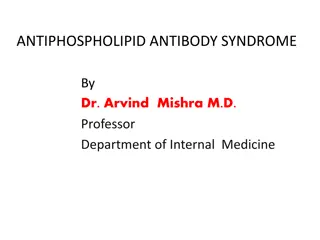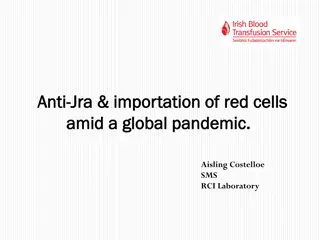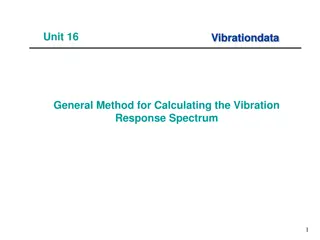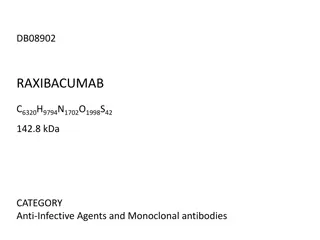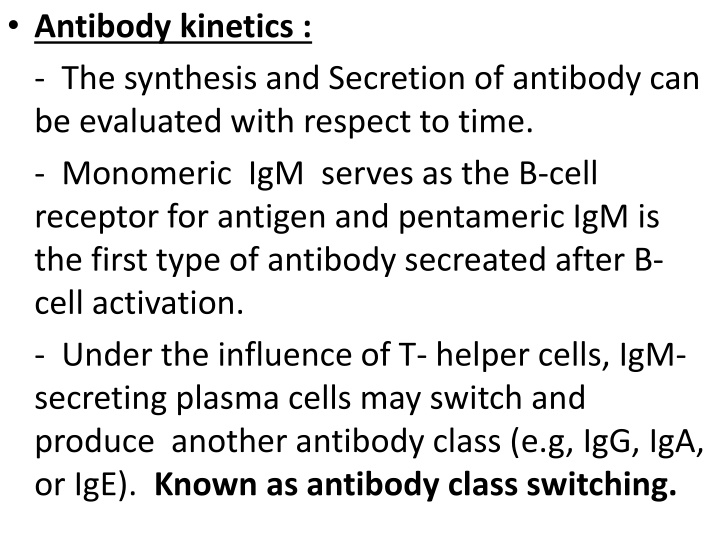
Antibody Kinetics and Responses
Learn about antibody synthesis, primary and secondary antibody responses, antibody class switching, and the dynamics of IgM and IgG antibodies. Explore the processes of antigen exposure, antibody titer, and the differences between primary and secondary immune responses.
Download Presentation

Please find below an Image/Link to download the presentation.
The content on the website is provided AS IS for your information and personal use only. It may not be sold, licensed, or shared on other websites without obtaining consent from the author. If you encounter any issues during the download, it is possible that the publisher has removed the file from their server.
You are allowed to download the files provided on this website for personal or commercial use, subject to the condition that they are used lawfully. All files are the property of their respective owners.
The content on the website is provided AS IS for your information and personal use only. It may not be sold, licensed, or shared on other websites without obtaining consent from the author.
E N D
Presentation Transcript
Antibody kinetics : - The synthesis and Secretion of antibody can be evaluated with respect to time. - Monomeric IgM serves as the B-cell receptor for antigen and pentameric IgM is the first type of antibody secreated after B- cell activation. - Under the influence of T- helper cells, IgM- secreting plasma cells may switch and produce another antibody class (e.g, IgG, IgA, or IgE). Known as antibody class switching.
The Primary antibody Response : - When an individual is exposed to an antigen (e.g; an infection or vaccine), there is an initial lag phase or latent period (up to several weeks), before an antibody response is mounted. - During this latent period, no antigen-specific antibody can be detected in the blood.(Fig.) - once B cells have differentiated into plasma cells, antibody is secreted and can be detected.
- During the primary antibody response, IgM appears first, then switches to another antibody class usually IgG. - The affinity of antibodies for the antigen s determinants is low to moderate during primary antibody response. - The Antibody Titer, - is a mesasurement of serum antibody conc.( the reciprocal of the highest dilution of an antiserum that gives a positive reaction in the test being used) , then rises logarithmically to a plateau during the second , or log phase. - In plateau phase antibody titer stabilizes.
- followed by a decline phase during which antibodies are naturally metabolized or bound to the antigen and cleared from circulation. The Secondary Antibody Response : - The primary antibody response primes the immune system so that it possesses specific immunological memory through its clones of memory B cells, each of which respond to a different antigen. - When an individual is reexposed to a pathogen or receives a vaccine boosters, B cells amounts a heightened secondary response to the same antigen (Fig).
- Compared to the primary antibody response , Secondary antibody response has a shorter lag phase and a more rapid log phase, persist for a longer plateau period, attains a higher IgG titer and produces antibodies with a higher affinity for the antigen.

